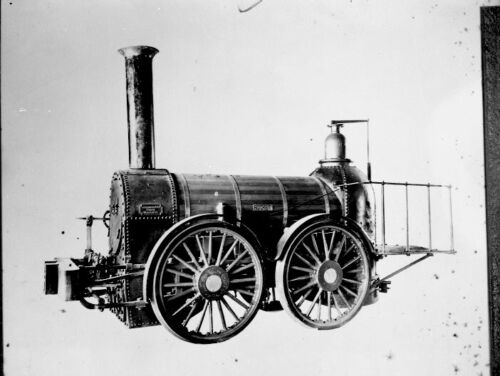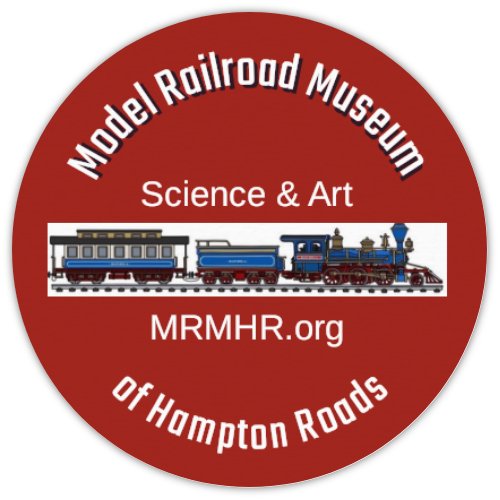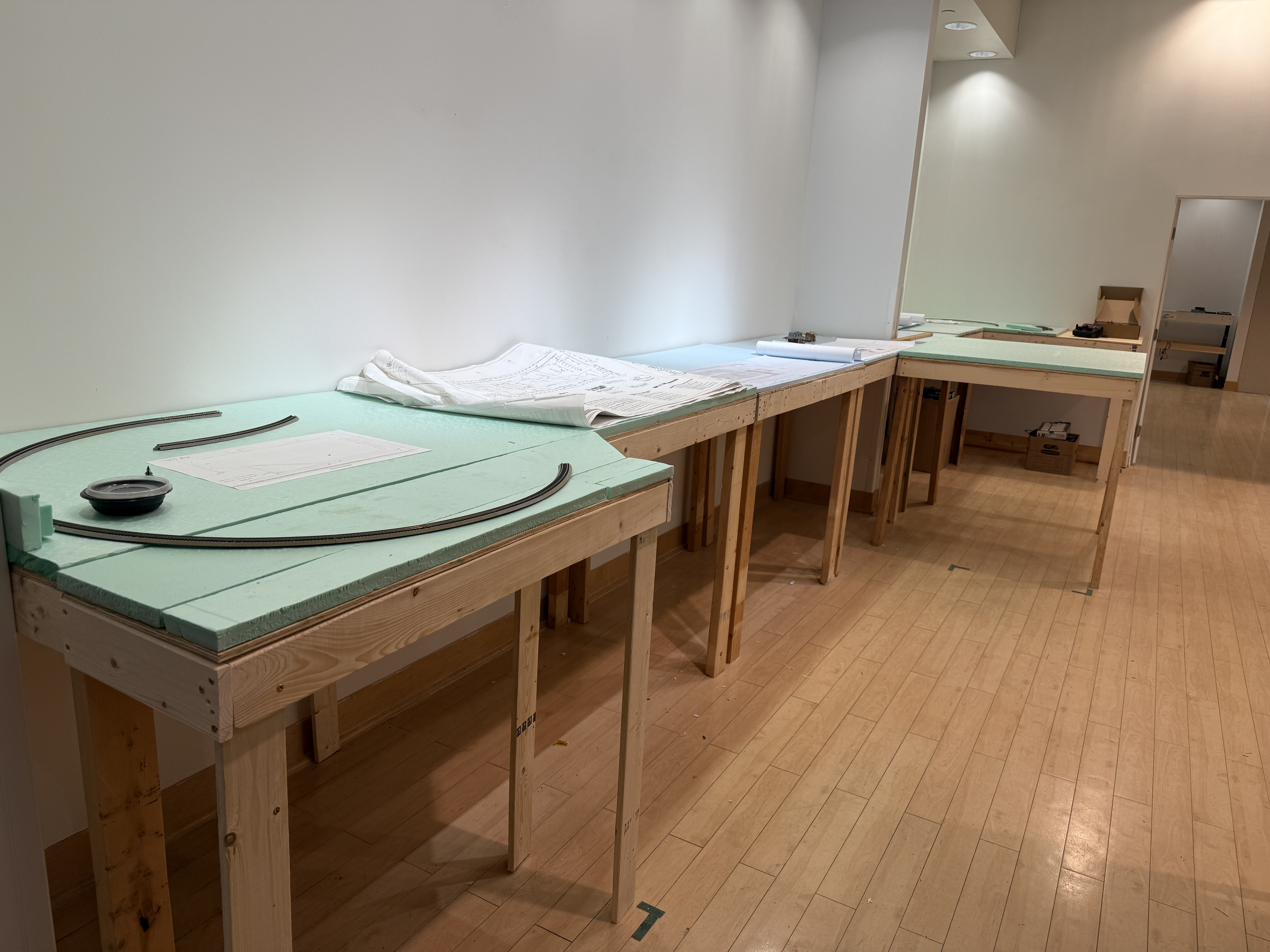Come Together
Get Ready for Family Fun,
Education, and Entertainment!!
| search engine by freefind | advanced | ||
Making Tracks
October 2023
Are you a Model Railroader?
 1838 Reading Loco
1838 Reading LocoPart 3: The Birth of Virginia Beach
By Warren Leister
A wedding, the yellow fever epidemic, a new canal President, the opening of the Hollies resort on a remote Atlantic beach, and the Civil War!
Marshall Jr. married Sophie Jackson, the youngest daughter of the Rev. Joannas Edward Jackson. Both parties were of Norfolk and the ceremony was officiated by the bride’s brother the Rev. William M. Jackson and occurred on June 6, 1855 at St. Paul’s Episcopal Church in Norfolk, Va. Later in the fall on October 6 the same Rev. William M. Jackson, the well known rector at St. Paul’s and also Marshall Jr.’s brother-in law, succumbed to the yellow fever epidemic that swept Norfolk that year!
The yellow fever epidemic that struck Norfolk and Portsmouth in the summer and fall of 1855 was one of the worst in U. S. history. It started when the steamer Benjamin Franklin docked in Hampton Roads for repairs after a trip to Hampton Roads from St. Thomas in the Caribbean. Life in both cities ground to a halt. Before it was over an estimated 3,000 people died in Norfolk, approximately one-fifth of the entire population at the time, while upwards of 1,000 died in Portsmouth. Neither city would fully recover until the twentieth century.
Back in the 1850’s, the specific causes of yellow fever and malaria were not well understood within the medical community much beyond that a pathogen was being transmitted uncontrollably between infected people. Without this knowledge, they weren’t sure how to stop or prevent these epidemics.
Ironically, in light of our story here about the achievements of Marshall Parks Jr., it would take the largest canal project in world history and Dr. William Gorgas, who built on the previous work of Maj. Walter Reed Medical Corps United States Army, to truly understand and eliminate yellow fever and malaria in the developed world of today.
The two diseases greatly inhibited the original building of the canal which began with the French in 1880. Ultimately the French gave up and the U. S. took over the project. Ultimately, it was found that the diseases had to be eradicated to continue building and to eventually finish this canal. What was this massive canal project? The Panama Canal which was completed and opened in 1914. This canal has continued to be upgraded to this day and helps a modern Hampton Roads compete for trans Pacific shipping with U. S. west coast ports.
According to the Raleigh Register Published November 10, 1855, “At the annual meeting of the Stockholders of the 'Great Bridge Lumber and Canal Company' (as the Albemarle and Chesapeake Canal company was initially called) yesterday Marshall Parks (Jr.) Esq, late Vice President, was unanimously elected President of the Company …” In February, 1856, the canal project was renamed the “Albemarle and Chesapeake Canal Company.” Marshall Jr. was to remain President for 30 years.
By 1858, the Norfolk and Petersburg Railroad, a predecessor to the Norfolk and Western Railroad now the Norfolk Southern railroad, became the second railroad to connect to Hampton Roads. There will be more about that later.
Sometime just prior to the Civil War, Marshall Jr., after be became President of the A&C Canal company, bought a large plot with a grove of holly trees at the desolate Princess Anne County oceanfront in what was later to become Virginia Beach. He then built and operated a hotel called “The Hollies” that existed near the south end of the Virginia Beach ocean front North of Rudee Inlet in the approximate vicinity of where ninth street in Virginia Beach is today. The Hollies hotel was patterned after the Hygeia hotel that he and his father had operated years earlier.
Years later President Marshall Jr., along with his railroad and improvement company, built an even larger more impressive hotel at the ocean front called the Princess Anne Hotel. However, even in those early pre-Virginia Beach times at the Hollies hotel, Parks used to declare prophetically that one day the area would become a famous seaside resort! Ultimately of course, Virginia Beach would not only become Virginia’s largest city, by population, but also the world’s largest resort city, fulfilling Parks’s prediction and much more!
Marshall Jr. continued to advocate, visualize, and dream about a circular inland navigation system of the eastern U.S. that included the east coast south to Florida then across Florida to the Gulf of Mexico to the Mississippi River up north to the Great Lakes then east through the lakes into New York leading back to the east coast once again. By 1880 he had created an elaborate map of this proposed inland navigation system along with light houses he envisioned for night time travel, and that was when he came to be regarded nationally as the father of inland navigation in the U. S.
On October 1855, construction began on one of the most important artificial waterways, the A&C Canal. Today, the A&C Canal is maintained and operated by the U. S. Army Corps of Engineers and is part of the well-traveled Atlantic Intracoastal Waterway. It consists of a sea level water connection between Chesapeake Bay and the Albemarle Sound. The Canal has the distinction of having been one of the earliest of all American canals, suggested and first surveyed and mapped in 1772.
Construction of the canal could not begin until technology had advanced to allow steam power to operate mechanical dredges. In 1856, nine “Iron Titans” were obtained by Marshall Jr. and went to work chopping out living and petrified tree trunks. Some of these ancient tree trunks were eight feet in diameter! The “line of navigation” of the canal measures some 70 miles, with only 14 miles of land excavation. The North Carolina cut is five miles long and slices across the Currituck Peninsula at the village of Coinjock to enter the North River, flowing south into the Albemarle Sound. Norfolk, Virginia merchant and ship owner, Marshall Jr., was the person responsible for reviving the 18th century canal-building plan. Parks worked to get bills passed through both the Virginia and North Carolina legislatures simultaneously, a major feat by any standards even today.
The New York engineering firm Courtright, Barton and Company was contracted to dig the canal. On January 9, 1859, the A&C canal company’s little dispatch boat, the Calypso, a “pony” side wheel steamer which was 45 feet long by 9 feet wide and which according to A&C canal company financial records cost $1,199.84 in 1858 when it was acquired second hand from H. W. Fry, Jr. of Richmond, Va., made the first transit of the canal while towing the 110-foot barge Enterprise of Roanoke.
Shortly after the completion of the A&C Canal, the war between the states broke out. At the start of hostilities, both the A&C and Dismal Swamp canals were initially in the possession of the Confederate States of America, but in May, 1862 Union forces forced the immediate surrender of Norfolk and Portsmouth and most of Hampton Roads and the Union then took control of both canals until the end of the war.
This concludes “The Birth of Virginia Beach Part 3” the next installment, Part 4, will be published in the MTMHR’s November newsletter.
 RDG-P&R No. 1
RDG-P&R No. 1Museum Overview
Our core group of museum volunteers and directors are working hard to bring this establishment to fruition. There is much to be done. We are searching for the appropriate space where we can be assured to have enough room to display at least ten or more state-of-the-art model railroads. We wish to work with local schools to help enhance their STEM programs and to provide a place where students can apply much of what they have learned about science, art, architecture and technology. We are looking for sponsorships and investments to help supply the initial capital to produce a high quality, modern facility that will be a joy to visit.
Everybody loves trains! Go to any train show and see how many people are there. This will be a community service like no other. Give us a call to learn more...757-816-8399.
Share this site on your favorite Social Media page!
Recent Articles
-
Gift Shop
Mar 23, 25 08:19 AM
Want to buy a gift for a special person, We sell model trains and railroad-related gift items. We can order almost anything for you if it's available -
Model Railroad Advertising
Mar 03, 25 09:15 AM
Here is you chance to advertise your business to a selected audience of those who are truly interested in the hobby. -
Making Tracks March 2025
Mar 03, 25 09:08 AM
"Making Tracks" is the official newsletter for the Model Railroad Museum of Hampton Roads containing history, news, videos and updates
The Model Railroad Museum of Hampton Roads will be a fantastic community center based on running, operating and even building your own model railroads! There's something for every age here.
Learn about the real history of this area and how important it was in the building of America. Watch how railroads were built, the people involved, where America's roots were formed.
As they build their own railroads, students will be learning about science, electronics, architecture, technology, engineering, mathematics, and the art of 3 dimensional model landscaping. They can earn rewards for completing projects and winning contests.
Try to solve yardmaster problems on a switching layout like getting the lumber from the forest to the furniture store, by way of the saw mill and the lumber yard.
Run your train around blockades and other trains to get to the station on time without speeding or crashing.
Play railroad monopoly using model railroads. Winner is the one who can collect the most cars into his yard within an hour.
There will be programs for autistic and special needs kids, disabled adults and veterans.
School tours. Holiday Shows. Library and video rooms. Scouts are welcome. Even youngsters will have their own wooden models to enjoy. Classrooms and hands-on clinics for adults. Learn how to get started in the hobby. Or just enjoy the fun.
Everybody loves trains and this will prove it! Just click on the either the blue or the yellow DONATE button below to make it happen...
PayPal Giving Fund:
No Credit Card Fees
OR...
Charitable Donations through PayPal, Credit or Debit cards:
(Opt in or out of paying credit card fees)
Get Updates and Special Offers in
the MRMHR Newsletter:
Making Tracks
Sign Up Here...
The official newsletter for the Model Railroad Museum of Hampton Roads





